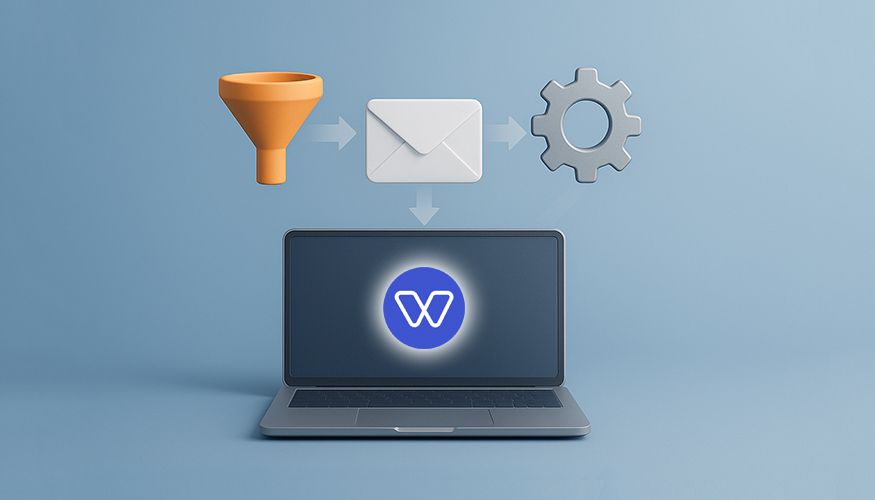Table of Contents
- Why AI in Sales Is Winning Now
- What Is Sales Automation?
- What Is Sales Enablement?
- The 8 Categories of AI Sales Tools You Actually Need
- How to Boost Sales Productivity with AI (Step-by-Step)
- Evaluation Criteria: Choosing the Best AI Sales Tools
- Example Workflows That Close More Deals
- FAQ
- Putting It Together—From Busywork to Revenue Work
Try Whippy for Your Team
Experience how fast, automated communication drives growth.
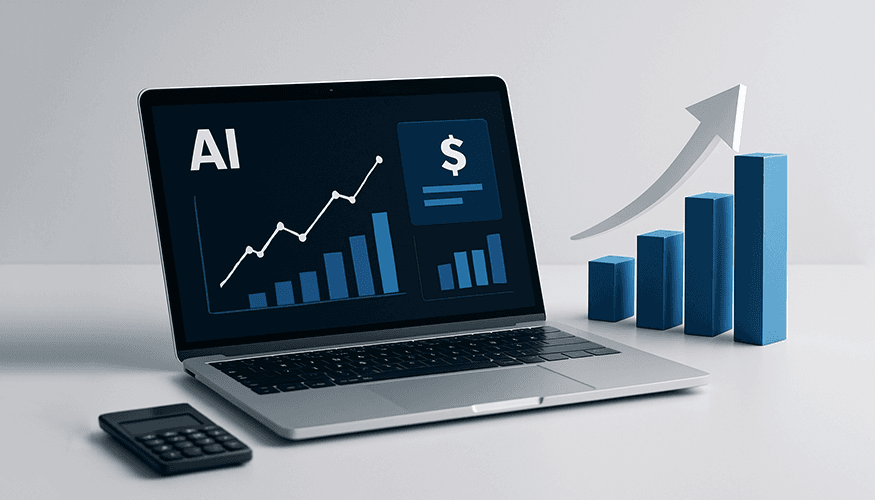
AI sales tools are transforming how sales teams operate by automating manual tasks and optimizing every stage of the sales process. These tools help automate repetitive sales tasks, manage customer interactions, and generate real-time insights that allow reps to prioritize leads and close faster.
By combining AI automation for sales↗ with advanced analytics, teams can personalize every outreach — from the first personalized email to a follow-up call — ensuring every prospect feels known and valued. They also empower sales leaders to identify which campaigns and workflows drive actual revenue, not just activity.
When integrated with a company’s customer relationship management (CRM) system, these tools turn scattered data into actionable intelligence. Reps gain a clear view of every deal’s status, while managers can monitor team performance and pipeline health with precision. This level of automation and intelligence helps organizations boost sales productivity, improve consistency, and make smarter decisions faster.
The best B2B sales tools unify all this functionality — combining AI sales assistant features, predictive analytics for sales, and voice AI for sales — into seamless, automated workflows that reduce friction and free teams to do what they do best: sell.
Why AI in Sales Is Winning Now
The modern sales environment is faster, noisier, and more complex than ever. Buyers expect instant responses, multiple communication channels, and relevant follow-ups — all without friction. This pressure has driven sales organizations to explore AI in sales as a practical solution for scaling operations while keeping the human touch intact.
AI doesn’t replace salespeople; it enhances sales activities by automating the parts of the job that slow teams down. It handles the admin — the logging, routing, and data entry — so reps can focus on conversations that move deals forward. This is where AI-powered sales solutions excel: they optimize workflows, analyze performance patterns, and ensure every customer interaction is captured, scored, and acted on in real time.
Modern sales productivity tools now make it possible to:
Automate sales process steps (logging, routing, sequencing, reminders).
Use conversation intelligence to identify trends and coach reps more effectively.
Apply hyper-personalization at scale across email, SMS, and voice touchpoints.
Streamline operations through automation & orchestration across the funnel.
Feed pipeline management and revenue intelligence systems with cleaner data.
This shift marks a new era of digital sales transformation. Instead of juggling disconnected platforms, teams now operate within intelligent systems that learn from every action. Sales leaders gain visibility into what’s working, while reps benefit from automation that removes repetitive work. The outcome is clear: faster cycles, higher conversions, and stronger customer relationships — all powered by data and automation.
What Is Sales Automation?
Sales automation refers to using AI and software systems to automate repetitive sales tasks and streamline processes across the entire customer journey. By combining AI automation for sales with intelligent data capture, organizations can eliminate manual logging, ensure consistent follow-up, and guide every opportunity through the funnel with precision.
A strong sales automation platform orchestrates every stage of engagement — from lead capture to close — and aligns with customer relationship management (CRM) data to keep every stakeholder informed. Instead of switching between tools, teams operate within unified automated workflows that trigger reminders, follow-ups, and next steps automatically.
Automation also improves coaching and forecasting. With conversation intelligence and analytics layered into daily operations, managers can detect gaps in performance and apply targeted guidance. This level of visibility helps sales leaders identify which sales activities are driving the most impact and where improvements will yield the highest ROI.
The goal isn’t to replace human effort but to enhance it — to use business AI for quality at scale, guided by real buyer intent and enriched data.
Want to see how sales automation software works in real life?
Explore our Sales Automation Software Guide↗ to learn how automation streamlines workflows and helps teams close deals faster.
What Is Sales Enablement?
Sales enablement is about empowering sales teams with the resources, tools, and insights they need to have effective conversations and close deals efficiently. In the age of AI, this discipline has evolved into AI sales enablement — blending automation, analytics, and personalized content delivery.
Modern sales enablement tools go beyond training and content management; they provide in-the-moment guidance powered by AI sales assistants and integrated sales productivity tools. These solutions ensure that reps always know what to say, what to send, and when to follow up.
AI-driven enablement systems analyze every customer interaction — emails, calls, and meetings — to surface the right assets and talking points for each stage of the journey. This ensures consistent messaging and faster decision-making, particularly in B2B sales tools environments where cycles are long and multiple stakeholders are involved.
Additionally, enablement automation enhances buyer enablement by simplifying how prospects access information. Reps can deliver tailored assets instantly with Whippy Embed↗ — from proposals to success stories — via personalized emails, ensuring a smoother experience for both sides.
Ultimately, sales enablement automation connects strategy, content, and data, allowing sales leaders to measure impact in real time. The result? Better-prepared teams, stronger relationships, and scalable growth.
The 8 Categories of AI Sales Tools You Actually Need
Instead of listing dozens of vendors, use this category blueprint to assemble the best AI automation tools for sales teams:
1) Sequencing & Multichannel Outreach
Use when: you need consistent outreach sequencing↗ across email/SMS/voice. Explore how omnichannel marketing automation↗ can align your outreach and follow-up workflows seamlessly.
Must-haves:
- Behavioral triggers (opens, clicks, replies)
- Branching logic & automation & orchestration
- Cold email tools with email coaching for tone and compliance
- AI for sales prospecting and lead qualification with AI
- Mobile-ready UX for field sales automation and mobile sales tools
Additional Use Case: Relationship Nurturing and Re-Engagement
Beyond cold outreach, many teams also use AI-driven sequencing to nurture existing clients, re-engage past prospects, and strengthen long-term relationships. Instead of pure lead generation, these campaigns focus on staying top of mind — sharing updates, success stories, or seasonal check-ins that strengthen relationships. Automated email and SMS touchpoints make it easy to maintain personal connections at scale without extra workload, helping sales teams drive repeat business and upsell opportunities.
Think of it as “always-on relationship selling” — powered by AI automation for sales.
2) Conversation Intelligence & Call Coaching
Use when: you want better calls, cleaner notes, and faster ramp.
Must-haves:
- Real-time call coaching and objection handling, and AI call center automation↗ tools that help teams deliver better conversations faster.
- Accurate call recording & transcription
- Meeting assistants that summarize and push notes to CRM
- Snippet capture for sales playbooks automation and training
3) Voice AI & AI Sales Assistant
Use when: you need more dials, faster follow-up, or voicemail coverage.
Must-haves:
- Natural conversational AI for sales with guardrails, integrated with Whippy VoIP↗ for crystal-clear, compliant outbound calls.
- Voice AI for business and voice AI for sales↗ with low latency
- Intelligent routing to humans for warm callbacks
- Compliance, local presence, and language support
4) CRM Integration & Knowledge Automation
Use when: your data is siloed or stale.
Must-haves:
- Robust CRM integration for sales↗ (bi-directional)
- Auto-logging of calls, emails, and SMS
- Knowledge automation to surface answers inside the workflow
- Strong permissions and audit trails
Additional Use Case: Data Flexibility and Independent Workflows
Modern AI sales platforms also offer data flexibility and independence, giving teams the freedom to run campaigns even without a CRM connection. You can upload CSV or contact lists directly — for example, leads from marketing databases or events — and run fully automated outreach sequences right inside the platform. Once those contacts convert, all messages, calls, and notes automatically sync back into your CRM.
This gives sales teams full control over data and workflow orchestration, without being tied to one system.
5) Enrichment, Intent & Scoring
Use when: you want better targeting and prioritization.
Must-haves:
- Data enrichment and intent data ingestion
- Lead scoring + predictive analytics for sales
- Route by go-to-market (GTM) segment, territory, or product line
6) Sales Intelligence & Forecasting
Use when: leadership wants signal, not noise.
Must-haves:
- Sales intelligence tools and revenue intelligence views
- Sales forecasting with scenario planning
- AI solutions for sales productivity and growth dashboards
7) Sales Content & Enablement
Use when: reps need the right asset at the right moment.
Must-haves:
- Sales content management with version control
- Recommended assets by stage, persona, and objection
- Instant clips from call recordings for follow-up
8) Automation Framework & Governance
Use when: you’re scaling.
Must-haves:
- Clear roles for enterprise AI and AI trends evaluation
- Guardrails for generative AI usage and tone
- Workflow rollbacks, staging, and auditability
How to Boost Sales Productivity with AI (Step-by-Step)
Use this checklist to build a stack that improves sales productivity fast—without breaking processes. AI-driven sales automation software helps teams automate repetitive tasks, focus on higher-value opportunities, and streamline sales operations for measurable results.
1. Identify the Core Bottleneck
Start by pinpointing one issue that’s slowing your pipeline — for example, delayed follow-ups, inconsistent handoffs, or data gaps in the CRM. Fixing one high-impact friction point creates immediate lift and builds team confidence in automation.
2. Automate the “Last Mile”
Once you’ve identified your bottleneck, automate the last mile — confirmations, reminders, and scheduling. These small but frequent activities drain productivity. AI can automate the sales process where reps lose the most time, improving consistency and freeing them to focus on real selling.
3. Sync Everything into Your CRM
Ensure all calls, messages, and notes are automatically written back into your customer relationship management (CRM) system. This real-time sync enables sales and marketing teams to collaborate smoothly and make faster, informed decisions based on accurate data.
4. Turn On Conversation Intelligence
Enable conversation intelligence to capture and analyze every customer interaction. Instead of relying on manual note-taking, AI surfaces insights, identifies coachable moments, and supports smarter call reviews. This helps every sales representative improve faster.
5. Add Predictive Help
Leverage predictive analytics for sales to guide reps toward the most promising leads and opportunities. Predictive scoring prioritizes high-intent prospects so teams focus their outreach where it will have the biggest impact.
6. Layer Voice AI for Extended Coverage
Implement voice AI for sales to maintain coverage after hours or during high-volume periods. Voice AI can handle first-touch calls, leave personalized voicemails, and route callbacks automatically—ensuring no opportunity is missed.
7. Measure What Matters
Track results using key metrics like reply rate, meetings booked, deal cycle time, and pipeline health. Use productivity tools for sales teams to visualize progress and uncover patterns that inform your next iteration.
8. Iterate and Refine
Meet weekly with a cross-functional team to refine automation and improve performance. Ongoing review helps you identify new efficiencies and continue using AI to streamline sales workflows over time.
This step-by-step approach boosts sales productivity, increases sales performance, and helps you grow revenue through sales automation—without losing the human touch or overwhelming prospects.
See how it works in action:
Check out Whippy’s Products↗ to explore how top sales teams use AI to automate workflows, personalize outreach, and close more deals — all in one powerful platform.
Evaluation Criteria: Choosing the Best AI Sales Tools
When evaluating AI sales tools, focus on integration depth, automation power, and actionable insights that support using AI to streamline sales workflows effectively.
Outcome Fit
Can it boost sales productivity quickly? Does it improve sales efficiency in measurable ways? The right stack empowers every sales representative to sell more with less friction.
Data & Integrations
Does it offer reliable CRM integration for sales and write back every activity? Strong connections create one source of truth for sales and marketing teams.
Intelligence
Does it include AI sales assistant capabilities, meeting assistants, and conversation intelligence that reps actually use? AI insights should help teams make informed decisions, not overwhelm them.
Automation Depth
Can it automate repetitive sales tasks end-to-end, with safe automation & orchestration? The more unified your sales automation software, the smoother your pipeline becomes. Discover how to automate customer communication↗ using AI tools that scale your outreach and service channels.
Personalization & Compliance
Can it support hyper-personalization at scale while staying on-brand and compliant? The best systems personalize every email campaign automatically without losing the human touch.
Mobility & Field Readiness
Does it include mobile sales tools and field sales automation support? AI-powered mobility ensures teams stay productive anywhere.
Security & Governance
Does it meet enterprise standards for enterprise AI usage and data protection? Governance safeguards the trust you build with clients.
Example Workflows That Close More Deals
A) Fast Inbound Triage
AI captures inquiry → qualifies with AI-enabled sales tools → routes to owner → sends “here’s what to expect” email → books time with meeting assistants.
This type of automated workflow eliminates manual sorting and guarantees a faster response, dramatically improving conversion.
Outcome: Faster speed-to-lead, higher connect rate.
B) Programmatic Nurture with Conversational Touches
AI sales automation runs outreach sequencing (email + SMS) → conversational AI for sales answers basic questions → escalates complex ones to humans.
These consistent, personalized touches replace static sequences with dynamic email campaigns that adapt to engagement.
Outcome: More meetings from dormant accounts.
C) Voice AI for Prospecting Coverage
Voice AI for sales works late afternoon windows and leaves dynamic voicemail; AI sales assistant answers simple callbacks and routes hot leads to reps.
By combining automation with human follow-up, sales and marketing teams maintain engagement and momentum throughout the day.
Outcome: More live conversations, less rep downtime.
FAQ
Q: What is sales automation?
A: Sales automation uses AI in sales and business rules to automate repetitive sales tasks—like call logging, routing, and reminders—and coordinate multistep workflows across tools.
Modern sales automation tools and sales workflow automation systems eliminate manual work, giving reps more time to sell. When well-implemented, automation helps teams increase revenue with sales automation by improving response times, accuracy, and consistency.
Q: What is sales enablement?
A: Sales enablement ensures reps have the right content, context, and training to run effective conversations and close deals. It combines sales enablement tools, sales enablement automation, and a clear sales enablement content strategy.
AI now plays a key role, helping teams surface the best content for each stage of the deal and ensuring consistency across reps and sales and marketing teams.
Q: Ways to automate your sales process
A: Start with AI tools for sales teams that handle repetitive work — outreach sequencing, lead qualification, conversation intelligence, and data enrichment.
Integrating sales automation tools and sales productivity software connects these tasks into one system, allowing teams to streamline sales operations and act faster across every channel.
Q: How do AI tools improve sales performance?
A: AI improves performance by cutting down on admin and surfacing insights in real time. Reps respond faster, personalize communication at scale, and act on data-driven recommendations.
Through predictive analytics for sales and sales intelligence tools, leaders gain visibility into pipeline health, forecast accuracy, and conversion drivers — turning routine activity into measurable progress.
Putting It Together—From Busywork to Revenue Work
The “best” stack isn’t the longest list—it’s the shortest list that moves pipeline. When AI for sales is implemented well, reps gain hours back every week, managers get cleaner data, and leaders get sharper sales forecasting and revenue intelligence. That’s real AI solutions for sales productivity and growth.
If you’re ready to see a unified, human-friendly approach to AI automation for sales—from AI sales enablement to AI tools to improve sales performance.
See how Whippy unifies AI automation for sales into one seamless workflow - Request a Free Live Demo↗
Table of Contents
Table of Contents
- Why AI in Sales Is Winning Now
- What Is Sales Automation?
- What Is Sales Enablement?
- The 8 Categories of AI Sales Tools You Actually Need
- How to Boost Sales Productivity with AI (Step-by-Step)
- Evaluation Criteria: Choosing the Best AI Sales Tools
- Example Workflows That Close More Deals
- FAQ
- Putting It Together—From Busywork to Revenue Work
Try Whippy for Your Team
Experience how fast, automated communication drives growth.
Related Articles
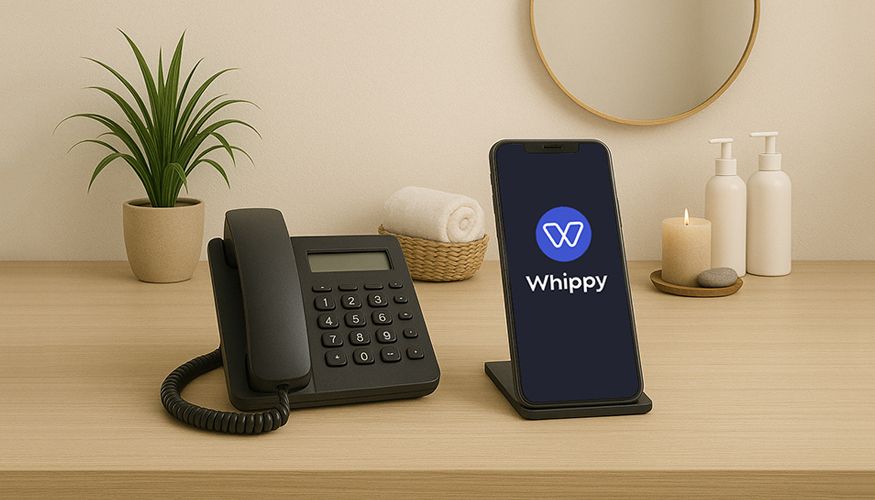
Salon Answering Service for Spas, Beauty & Wellness Venues

Ecommerce SMS Marketing Guide: Strategies That Convert
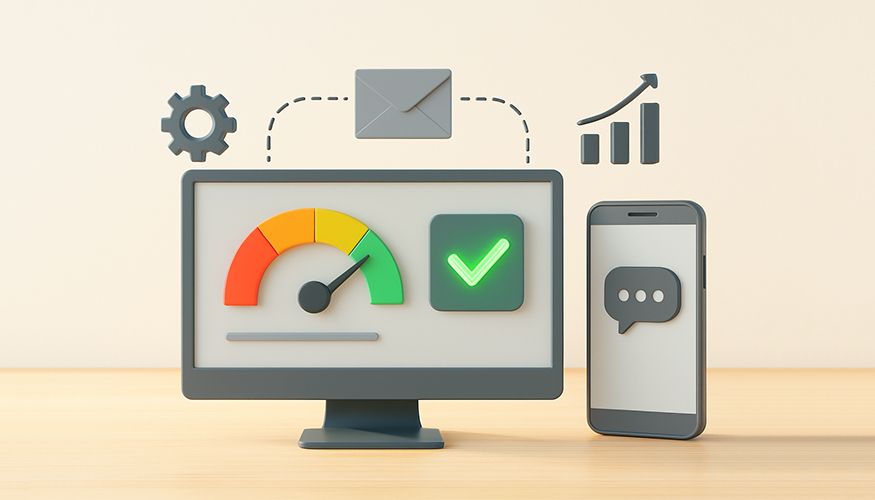
How to Improve CSI Scores with Automated Customer Communication Tools
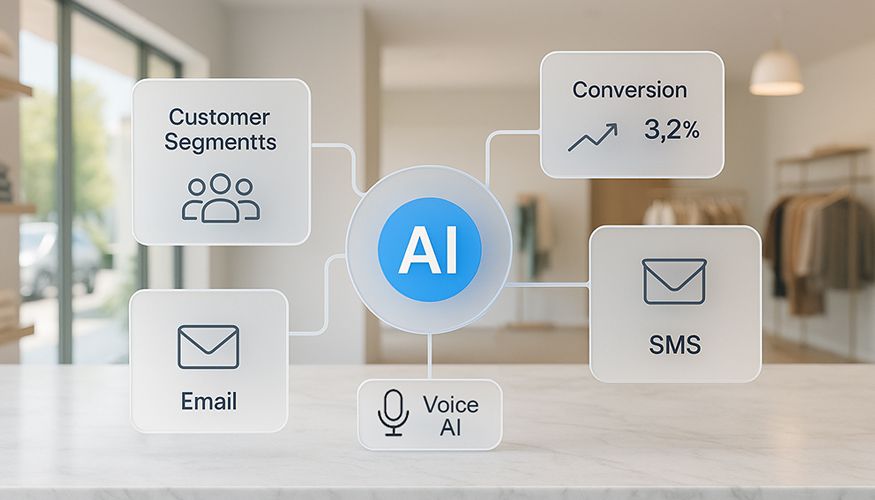
Retail Marketing Automation with AI: Strategies & Tools
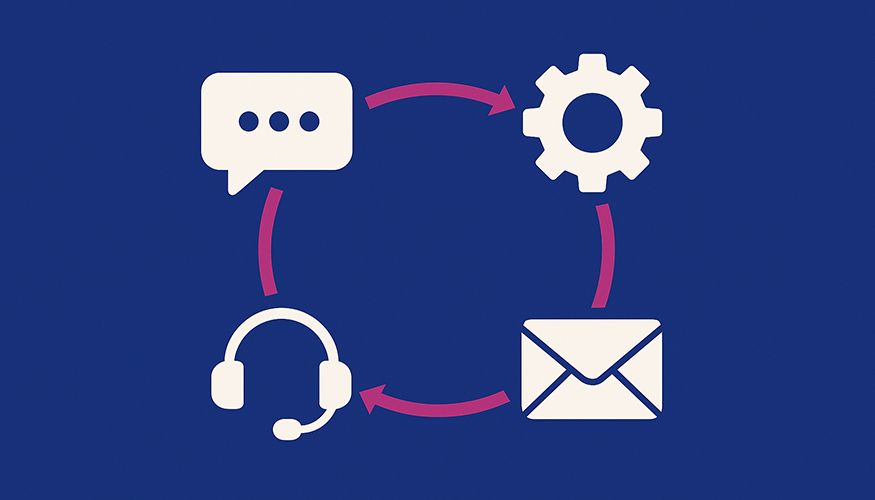
Automate Customer Support: Complete Guide to AI & Tools
